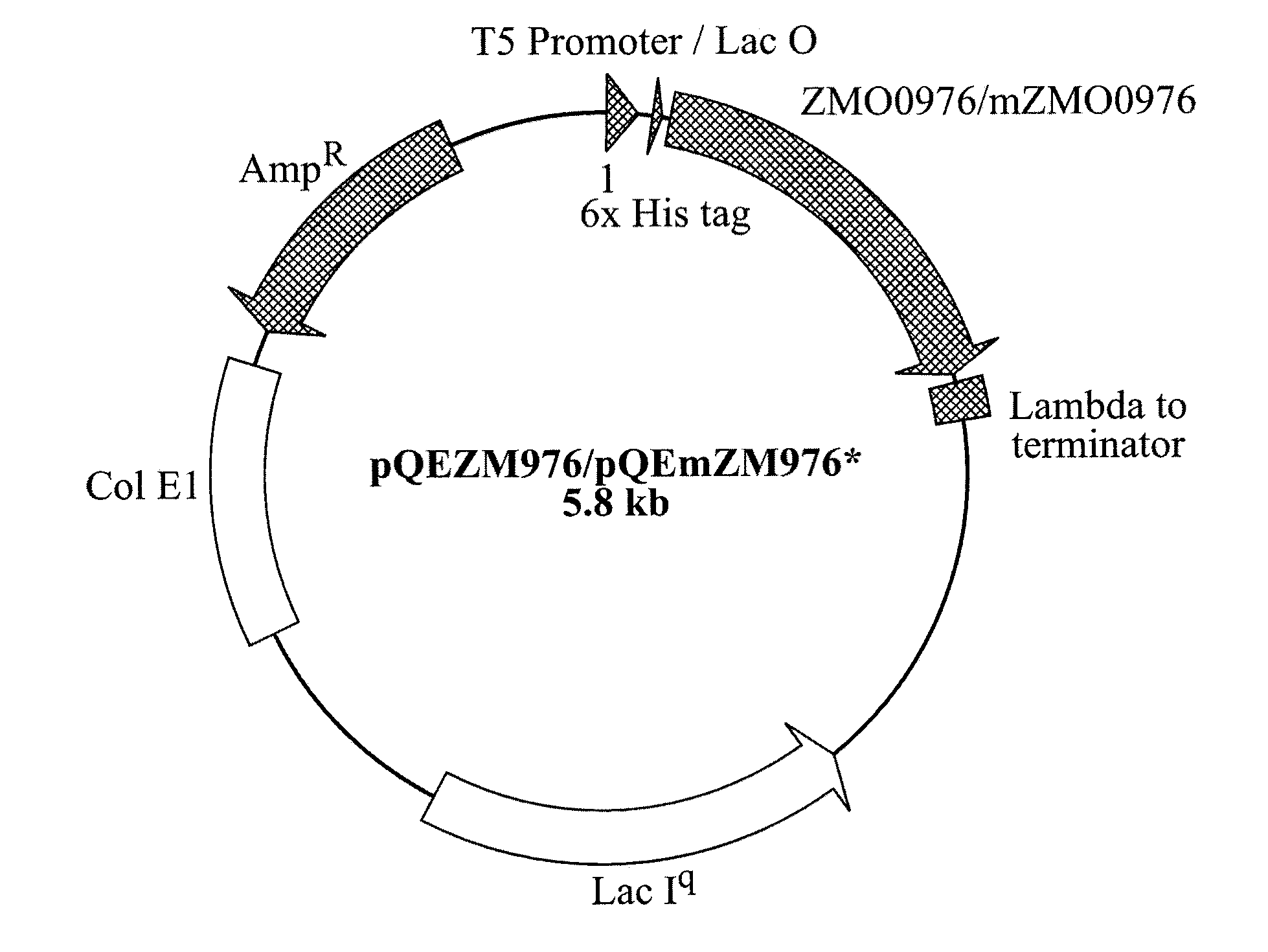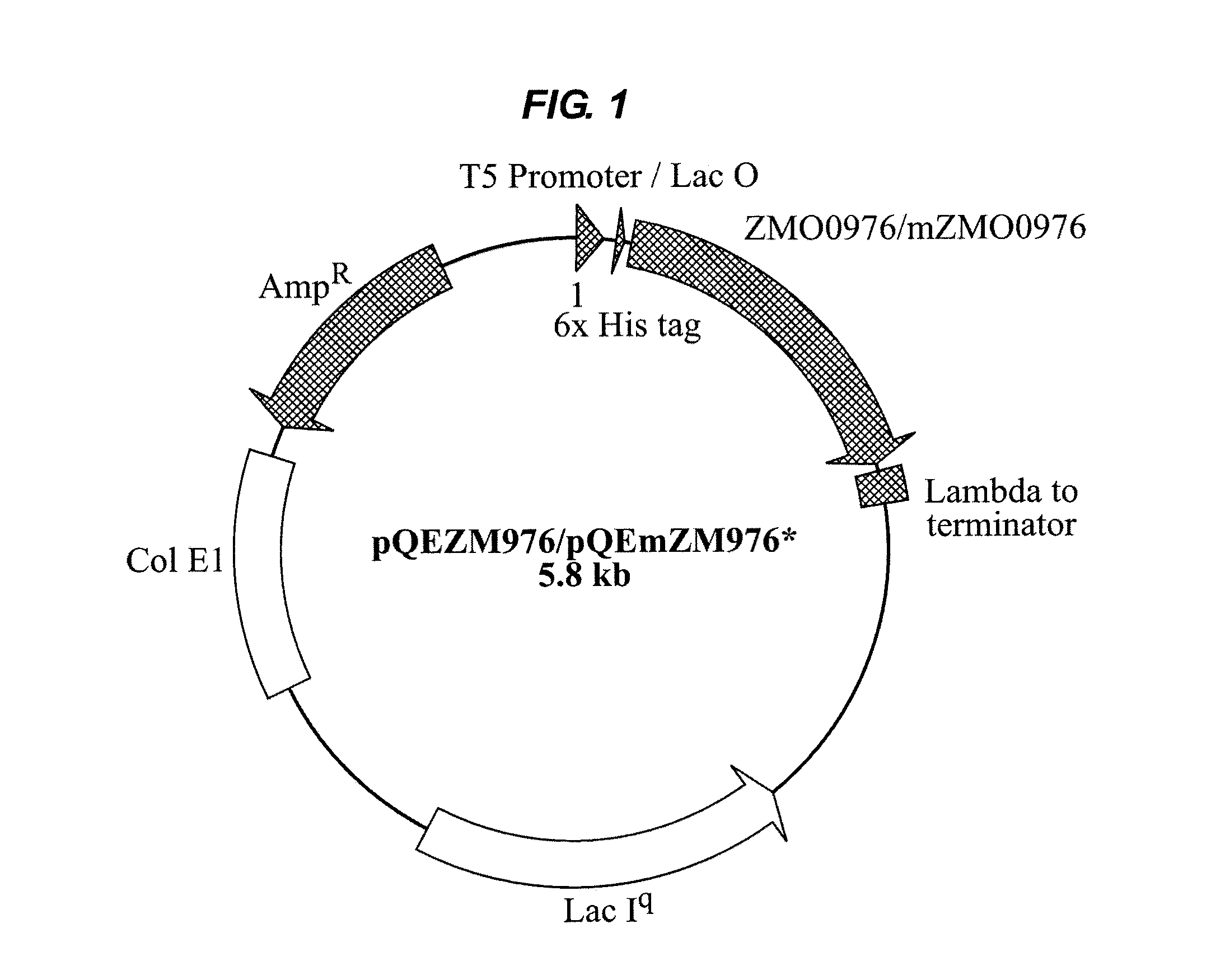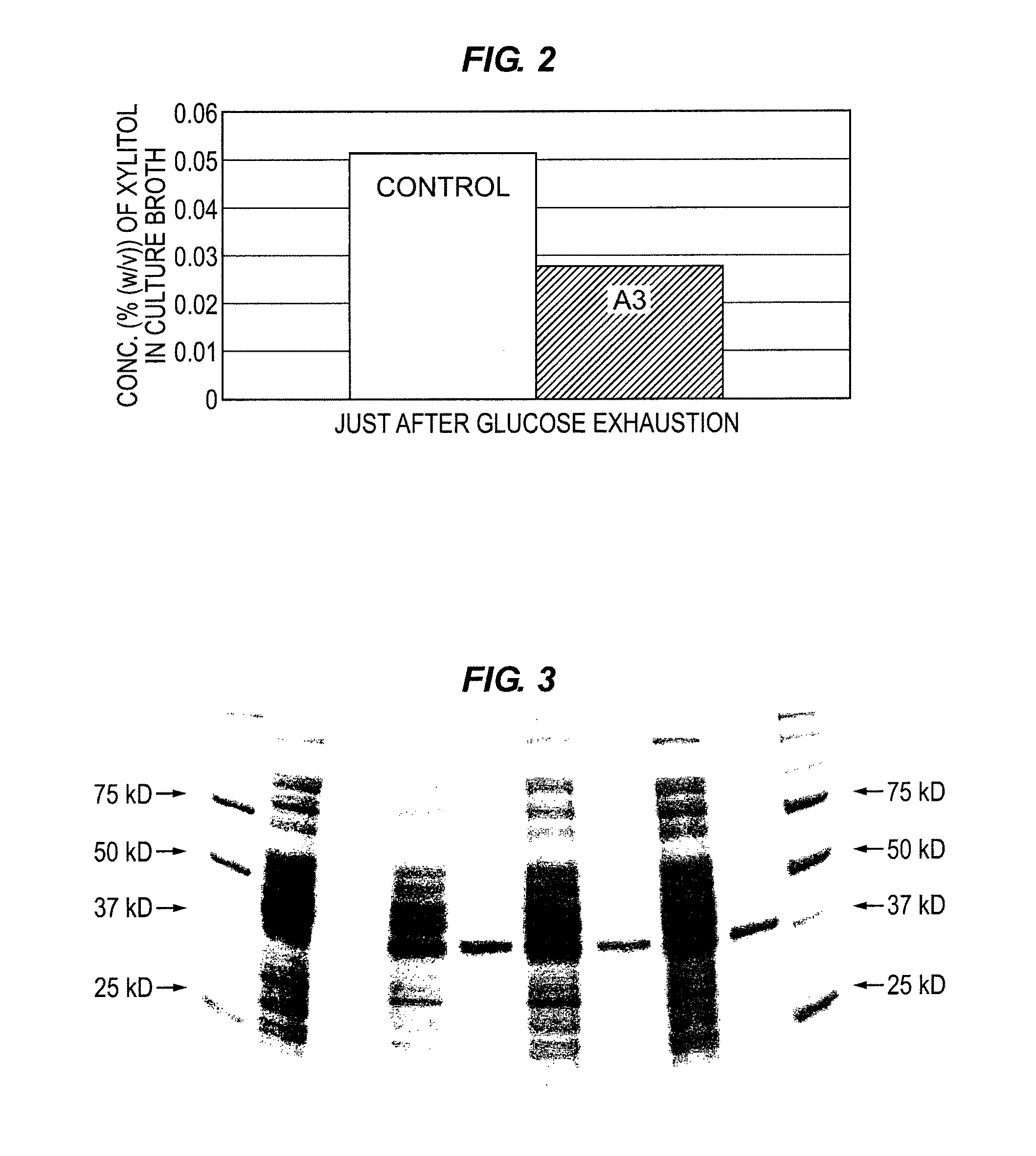Industrial Applications of A Novel Aldo/Keto Reductase Of Zymomonas Mobilis
a technology of zymomonas mobilis and keto reductase, which is applied in the field of industrial applications of a novel aldo/keto reductase of zymomonas mobilis, can solve the problems of often suffering from toxicity issues of microorganisms, and achieve the effects of reducing xylitol production, reducing xylitol production, and increasing ethanol yield
- Summary
- Abstract
- Description
- Claims
- Application Information
AI Technical Summary
Benefits of technology
Problems solved by technology
Method used
Image
Examples
examples
[0039]The following examples are presented to further illustrate and explain the claimed subject matter and should not be taken as limiting in any regard.
Organisms and Media
[0040]Z. mobilis ZM4 was grown in rich media (RM) containing 1% yeast extract, 0.2% KH2PO4 and different amounts of glucose or xylose (as mentioned) as carbon source. Antibiotic selection marker, chloramphenicol 100 μg / ml was added for culturing engineered strains of ZM4. Escherichia coli (E. coli) K-12 substr. UT5600 were grown in Luria-Bertani (LB) media. Ampicillin 100 μg / ml was added to the media as needed.
Culture Conditions
[0041]E. coli cells were grown at 37° C. in culture tubes or shake flasks at 250 rpm. E. coli cells were induced with 0.5 mM IPTG (Isopropyl β-D-1-thiogalactopyranoside) at an optical density (OD) of 0.4-0.6. Cells were grown for 4 hours at reduced temperature of 30° C. and then harvested for enzymatic assay.
[0042]Z. mobilis was grown at 30° C. Pre-seed culture (PSC) and seed culture (SC) ...
PUM
| Property | Measurement | Unit |
|---|---|---|
| temperature | aaaaa | aaaaa |
| OD | aaaaa | aaaaa |
| pH | aaaaa | aaaaa |
Abstract
Description
Claims
Application Information
 Login to View More
Login to View More - R&D
- Intellectual Property
- Life Sciences
- Materials
- Tech Scout
- Unparalleled Data Quality
- Higher Quality Content
- 60% Fewer Hallucinations
Browse by: Latest US Patents, China's latest patents, Technical Efficacy Thesaurus, Application Domain, Technology Topic, Popular Technical Reports.
© 2025 PatSnap. All rights reserved.Legal|Privacy policy|Modern Slavery Act Transparency Statement|Sitemap|About US| Contact US: help@patsnap.com



